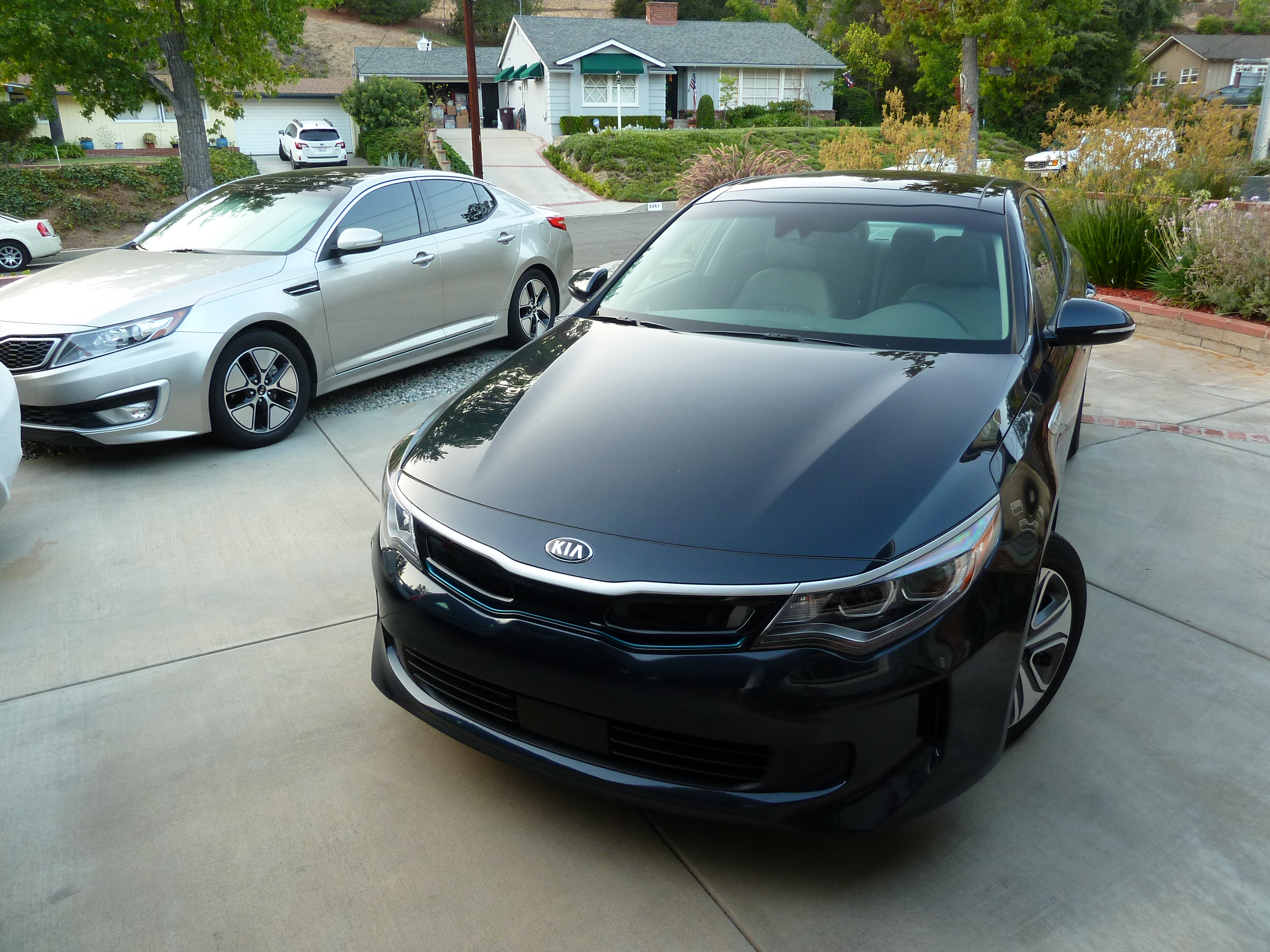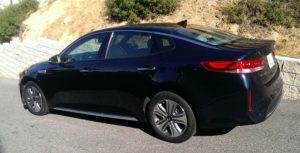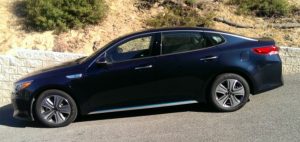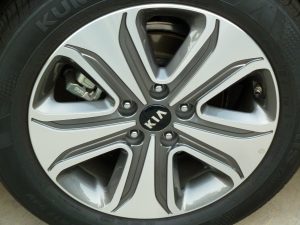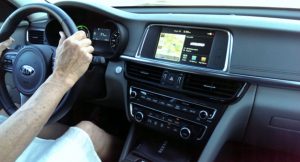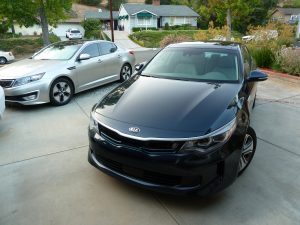
How many KIA Optimas can you fit on one driveway? At least two in my case, the car in foreground being my 2017 PHEV tester, and the lighter colored Optima behind it is our own.
Hyundai and Kia are going big on hybrids and EVs, you will see many more such products rolling out from them in the next few years. So I’ve made it my mission to drive and evaluate all of the current ones to get an idea about where the companies stand on them at the moment.
The Sonata and Optima are among my favorites from KIA and Hyundai. They’re great looking mid-sized sedans, that pack a ton of quality, features, safety, technology and luxury into this package for the money. So much so that I spent my own money for one; wife Linda drives a 2012 Optima Hybrid as her every day runner. And it’s been spectacular to own; Every creature feature you could ask for, good connectivity, industry leading warranty package, nice looking, great interior and cabin, plus she averages about 40 mpg, up a hill down a hill, on the freeway, off a cliff, doesn’t seem to matter.
So I really wanted to try the PHEV (Plug in Hybrid Electric Vehicle) version of it that came out with the last generational update of this model. I was of course initially impressed with the car’s EPA 103 MPGe rating, which is intended as a blended rating taking into account the “free” pure electric rating you get before the batteries are depleted, and the range offered in regular hybrid mode, using the electrically assisted gas engine. I was less than initially impressed with the 33 mile EV rating on battery only. And of course like everything, the price had sure gone up from our 2012; our fully equipped (without the plug-in EV feature) Optima Hybrid cost $30,000 and my 2017 PHEV tester stickered at $41,000. So those “free” miles cost money.
I can’t complain a bit about the car’s execution. The exterior design, which is a sharpened up and mildly updated riff on our 2012, and still looks great, in fact nicer. The exterior lighting clusters are even more jewel-like, there’s a new grille, new wheels, and all the usual five year advancement stuff.
Ditto the cabin; even nicer materials than ours, updated finishes, terrific leather seats, and privacy curtains for the rear cabin, great moonroof, killer audio and connectivity, blind spot warning system, etc. A great car made greater.

Powertrain runs beautifully, with very smooth transitions between electric motor assist and the four-cylinder gas engine.
And it drives wonderfully. On a full battery, thus in pure EV mode, it’s really quick with sharp power off the line, and plenty of passing juice (pun intended). Same great ride, crisp handling, and of course quiet, both in terms of very little wind or road noise, and of course no powertrain noise.
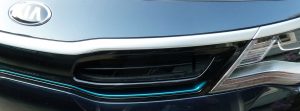
The grille contains little flipper panel ducts which stay closed when the engine is cold to help it warm up quicker, and flip open when up to temp for full cooling capacity. Trick!
Honesly my only gripe with this car is the cost/benefit equation for the EV aspect. Even though the car did return outstanding mileage when factoring in the EV-only range on top of a tank of gas, getting only the first 33 miles on pure EV, at a cost of nearly ten grand, doesn’t strike me as a great deal. It’s a lot of extra hardware and equipment to pick up only 33 miles on battery only, in my opinion. I asked a Hyundai representative (as the PHEV Sonata is identical in this sense) why they don’t “hit the batteries harder” for more EV range. He said they need to strike a balance between how much battery capacity they add to the car, warranty issues on those batteries, cost, and so forth. I get that, but still believe it falls just a little short of the mark. There are PHEVs that offer 50 miles of pure battery range so why, for ten grand, shouldn’t this one.
Otherwise, the car, in operation, is a spectacular and competitive player. I’d likely still prefer an Optima to most of the other mid size sedans on the market (gas, hybrid, PHEV or otherwise).
My belief is that as the advancement of PHEV technology continues, the PHEV will become “the hybrid” and that non-plug in hybrid models will go away. It won’t be long before every PHEV delivers 50-100 miles of “free” battery-only mileage before the gas engine has to take over. I’m sure that the next gen Sonata/Optima will deliver better pure EV range.
So if you want to take advantage of the technology and improved fuel mileage offered by PHEV, I’d say go ahead, but suggest you consider leasing the car. The lease payments won’t go up that much for the slightly higher cap cost, and your state may offer rebates that improve the equation. And you can enjoy it for 3-4 years, then turn it in for the next gen car which will surely deliver more. And if gas continues to get more expensive, getting that first 33-35 miles for each tankful essentially free only sweetens the deal.
Nice — in fact great — car, that only needs to go a step further in this one area.

